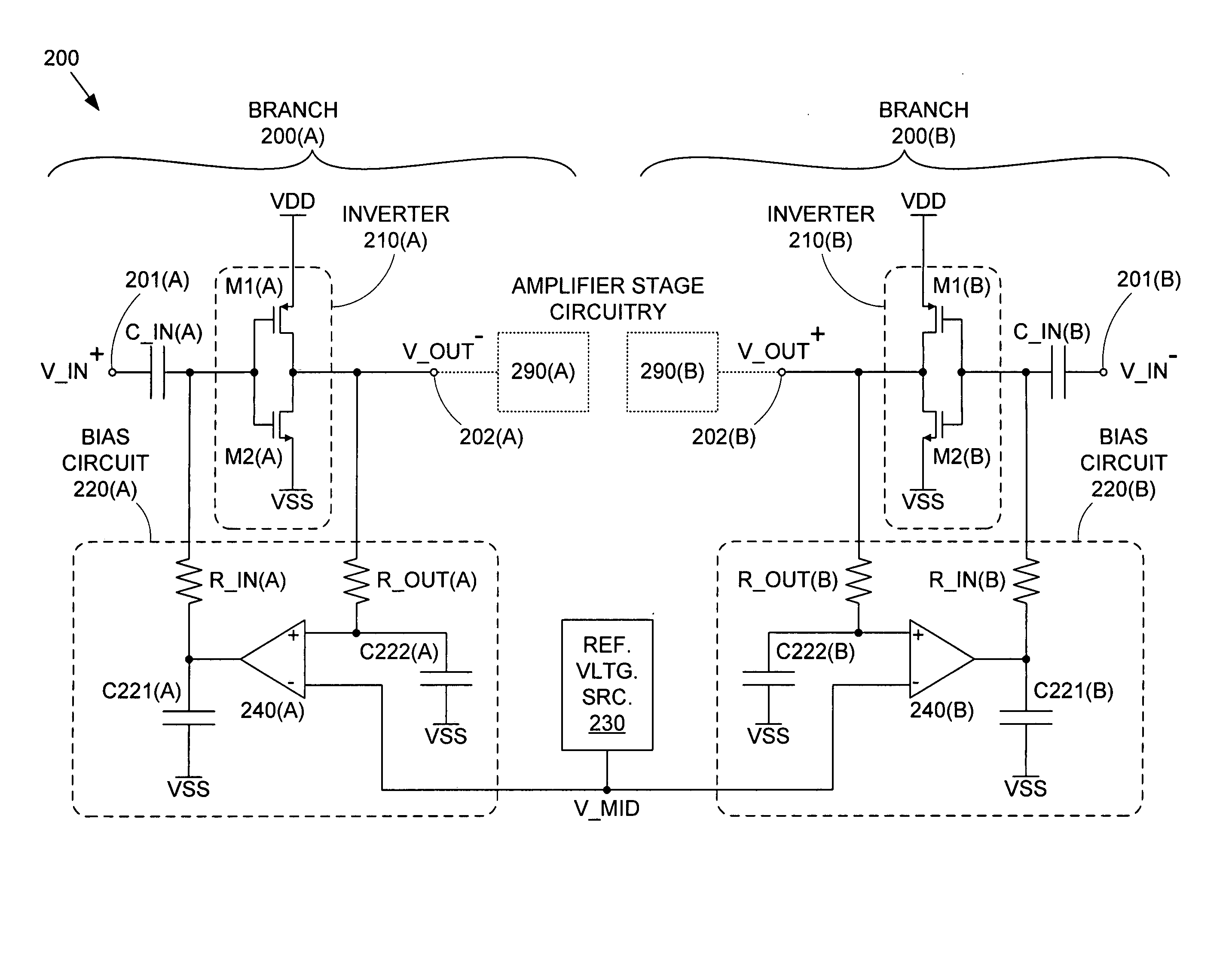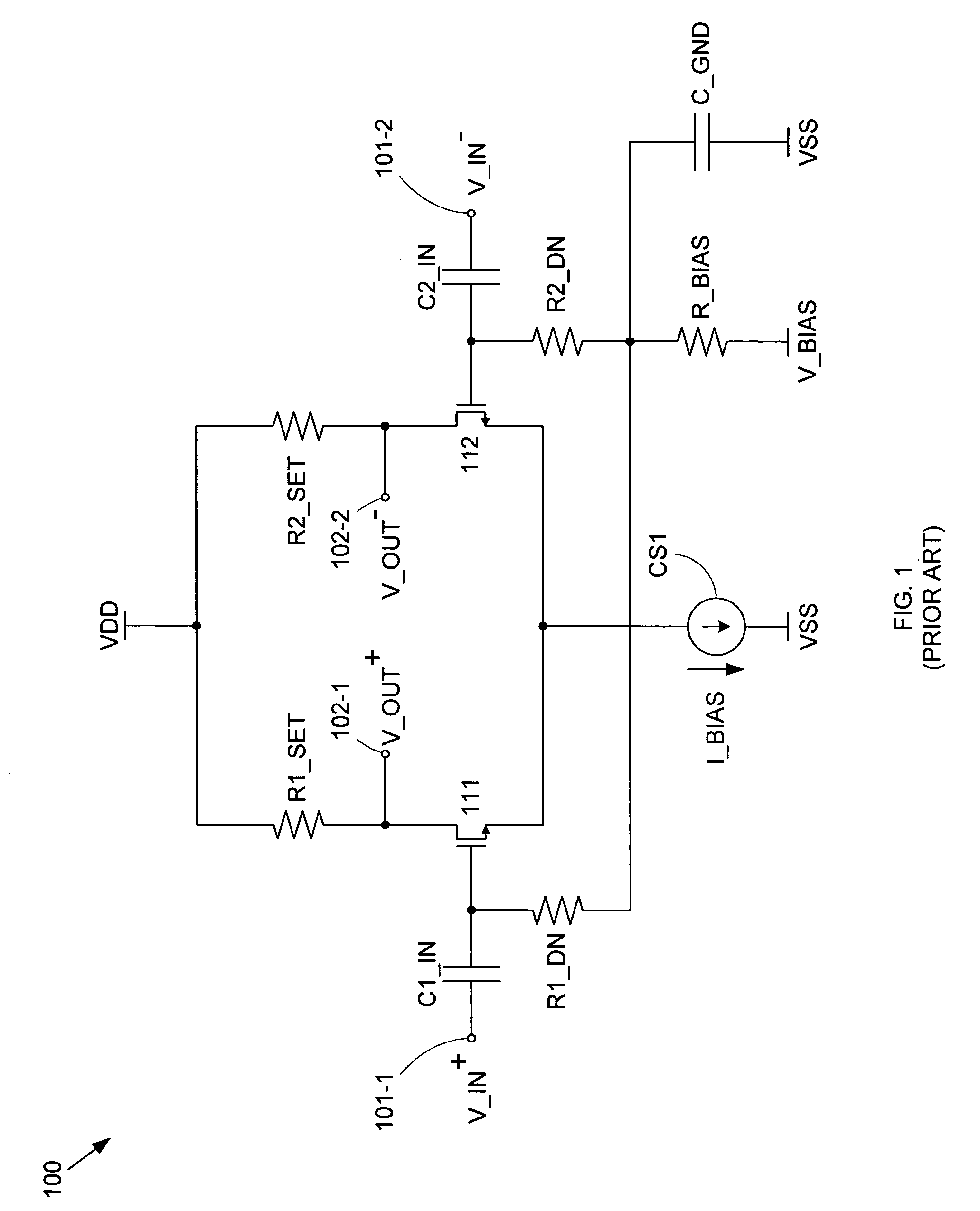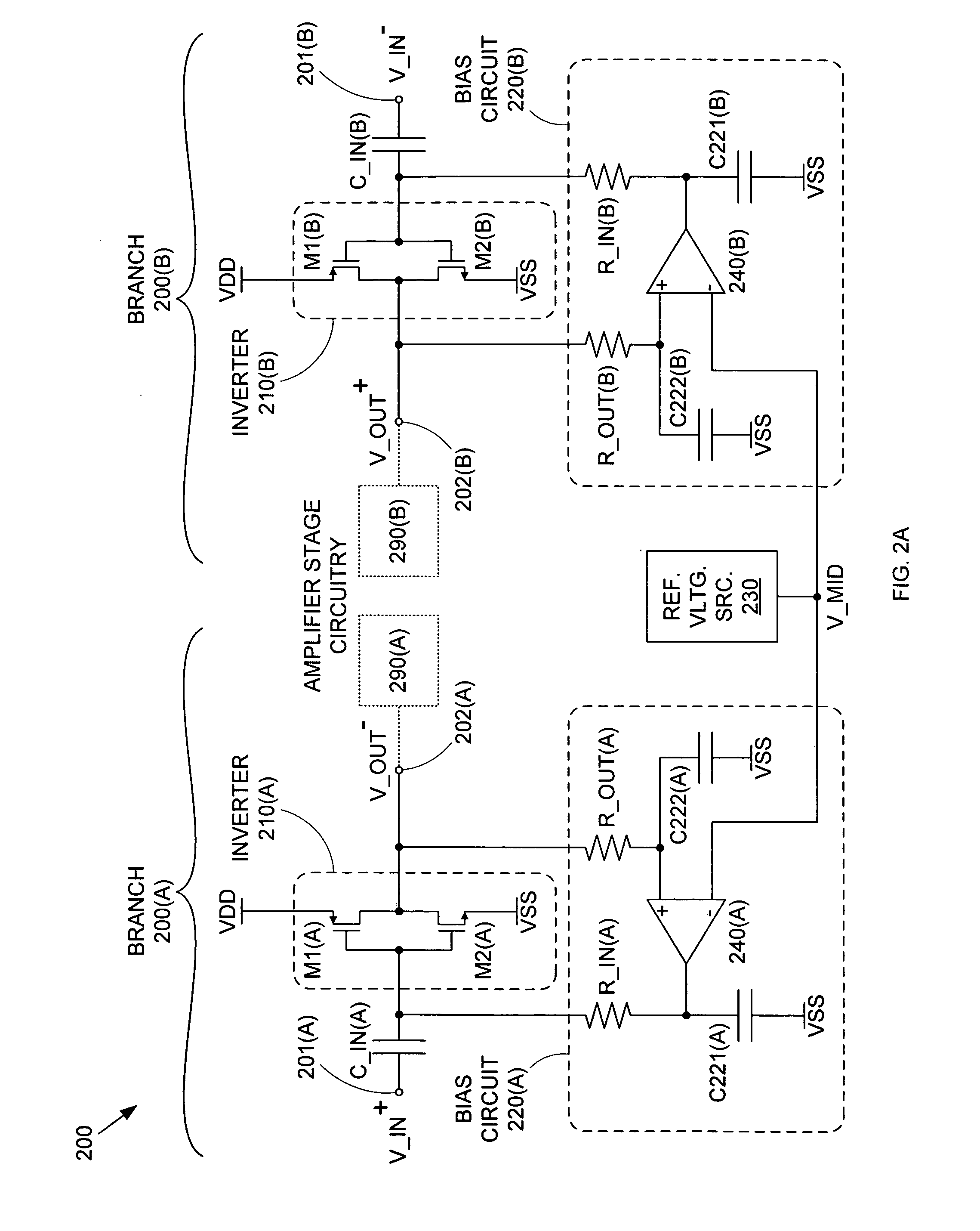High frequency differential power amplifier
a power amplifier and high frequency technology, applied in the field of high frequency communications, can solve the problems of excessive voltage drop, unsatisfactory output signal degradation, and increase the power consumption of differential amplifiers b>100, and achieve the effect of not consuming excessive power
- Summary
- Abstract
- Description
- Claims
- Application Information
AI Technical Summary
Benefits of technology
Problems solved by technology
Method used
Image
Examples
Embodiment Construction
[0024]FIG. 2A shows a high-frequency amplifier circuit 200 in accordance with an embodiment of the invention. Amplifier circuit 200 is formed from two branches 200(A) and 200(B). Branch 200(A) includes an input terminal 201(A), an output terminal 202(A), a CMOS inverter 210(A), a capacitor C_IN(A), and a bias circuit 220(A). Capacitor C_IN(A) is coupled between input terminal 201(A) and the input of inverter 210(A) and provides DC filtering at the input of inverter 210(A). Bias circuit 220(A) is connected between the output and input of inverter 210(A).
[0025] Inverter 210(A) includes a PMOS transistor M1(A) and an NMOS transistor M2(A) that are serially coupled between an upper supply voltage VDD and a lower supply voltage (e.g., ground). The gate terminals of transistors M1(A) and M2(A) are connected to form the input of inverter 210(A), while the drain terminals of transistors M1(A) and M2(A) are connected to form the output of inverter 210(A).
[0026] Branch 200(B) is substantial...
PUM
 Login to View More
Login to View More Abstract
Description
Claims
Application Information
 Login to View More
Login to View More - R&D
- Intellectual Property
- Life Sciences
- Materials
- Tech Scout
- Unparalleled Data Quality
- Higher Quality Content
- 60% Fewer Hallucinations
Browse by: Latest US Patents, China's latest patents, Technical Efficacy Thesaurus, Application Domain, Technology Topic, Popular Technical Reports.
© 2025 PatSnap. All rights reserved.Legal|Privacy policy|Modern Slavery Act Transparency Statement|Sitemap|About US| Contact US: help@patsnap.com



